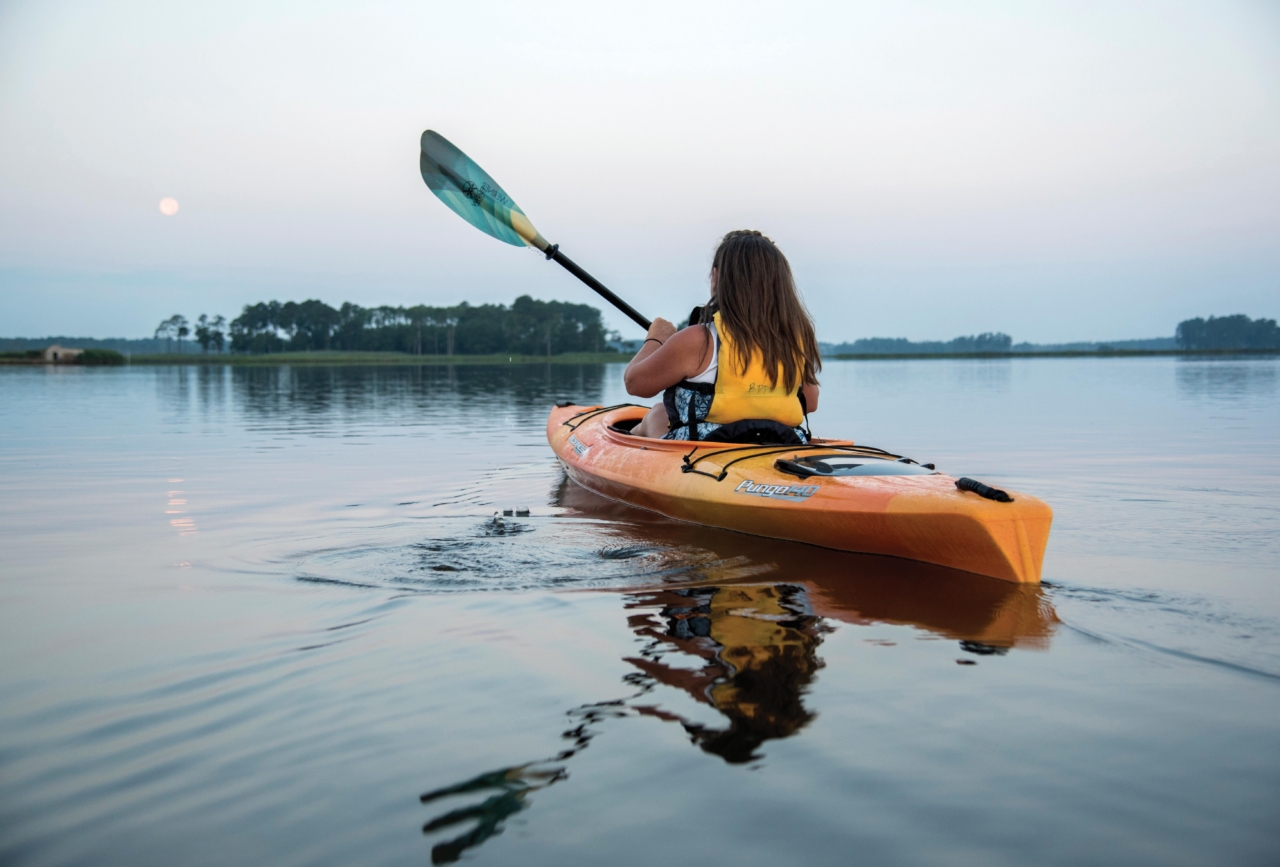Known as “The Everglades of the North,“ Blackwater National Wildlife Refuge is a sanctuary for its inhabitants and a treasure for its visitors
Written by Joe Willey
Photography by Jay Fleming
An untamed wilderness is hiding in plain sight. It is an iconic view of the quietly beautiful and soggy marshlands of the Chesapeake Bay region and the Eastern Shore of Maryland. It is a place that makes you feel like you are immersed in nature, not just observing it.
Blackwater National Wildlife Refuge, sitting just south of Cambridge, was established in 1933 as a waterfowl sanctuary for birds migrating along the Atlantic Flyway. Birds of all species are plentiful, but most of the 150,000 yearly visitors hope to get a soaring glimpse of the majestic American bald eagle. Sitting peacefully in the middle of the Delmarva Peninsula is the largest breeding population of American bald eagles on the East Coast, north of Florida. Blackwater National Wildlife Refuge is referred to as “The Everglades of the North.” It is an apt description, though most Delmarva residents are thankful that alligators are not a local attraction.
Replete with native birds of the East Coast, the refuge will make a birdwatcher’s head spin in giddy, flitting excitement while catching glimpses of songbirds, waterfowl, gulls and various raptors. The spring and fall migrations bring a parade of nonnative species, which, like clockwork, fly through each year on their journeys to other, less pristine, areas. The Canada geese are one of the most audible messengers of the fall and land in V-shaped droves in the refuge. There are
also snow geese and a kaleidoscope of ducks that announce their arrival but in a slightly less noisome way.


Blackwater NWR is home not only to feathered natural wonder but also to the formerly endangered Delmarva Peninsula fox squirrel, red foxes, sika deer and the lovably furry, semiaquatic muskrat. Visitors can get a close view of the humble muskrat lodges that rise like small grassy blisters in the mud and brackish water along the marshy shoreline.
The Little Blackwater River courses through the center of the refuge’s 30,000 protected acres. Ponds are scattered along the shore and bleed into the river in a blur of soft, steady tidal comings and goings. “Water, water every where, / Nor any a drop to drink,” might have been Samuel Taylor Coleridge’s ode to the marshlands of the refuge instead of to an ancient mariner, because the description is suited to what lies beyond the spongy shoreline. Unless visitors walk on the well-cared-for Wildlife Drive through the heart of the refuge, or hike through the stands of loblolly pines and white oaks that rise from the high ground, their visits would consist solely of wading through the wetlands that naturally line the banks of the Eastern Shore.
The lands of the refuge are continuously wild but never dramatic. There are no mountains, no waterfalls or other obvious wonders that draw awestruck tourists to visit and leave laden with T-shirts, keychains and coffee mugs. The scenery is simple and quiet but filled with subtle reasons to get out and explore what remains hidden to many but beautiful to all.




